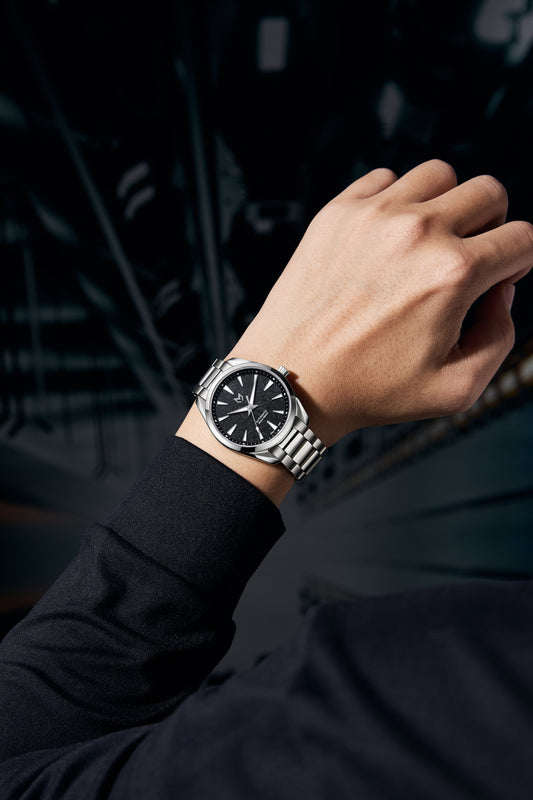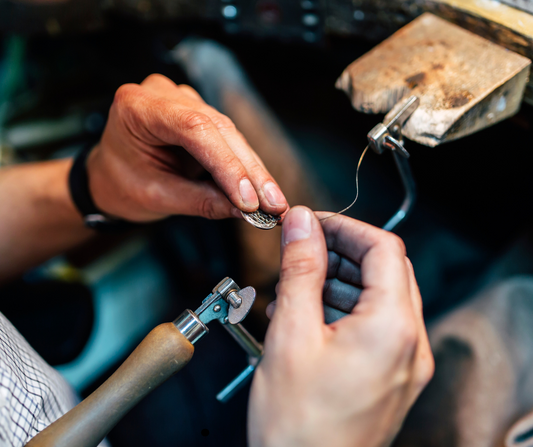
What is a mechanical watch?
What Is a Mechanical Watch?
In today’s world, where digital devices dominate our lives, the allure of mechanical watches remains strong. These timepieces are not just instruments to tell time; they are marvels of craftsmanship, artistry, and precision engineering. But what exactly is a mechanical watch, and why does it hold such a timeless appeal?
The Essence of a Mechanical Watch
At its core, a mechanical watch is a timekeeping device powered by a mechanical movement rather than by a battery or electronic components. It operates through a series of intricate gears, springs, and other components that work in harmony to measure and display time.
Unlike quartz watches, which rely on an electronic oscillator regulated by a quartz crystal, mechanical watches are powered by the energy stored in a wound mainspring. This mainspring is a tightly coiled metal strip that, when wound, slowly unwinds, releasing energy that drives the movement of the watch's hands.
How Does a Mechanical Watch Work?
To understand the magic of a mechanical watch, it’s essential to break down its key components:
1. Mainspring: The heart of the watch, the mainspring stores potential energy when wound. As it unwinds, it powers the movement.
2. Gear Train: The energy from the mainspring is transferred through a series of gears, which reduce the speed of unwinding and transmit the force to the escapement.
3. Escapement: This is the part of the watch that regulates the release of energy from the mainspring. It controls the speed at which the gears turn and, ultimately, the ticking of the watch. The escapement interacts with the balance wheel, ensuring that the watch ticks at a consistent rate.
4. Balance Wheel: Often compared to the pendulum of a clock, the balance wheel oscillates back and forth, regulating the release of energy. This oscillation is what produces the ticking sound in mechanical watches.
5. Dial and Hands: These are the visible elements of the watch that display the time. The hands move based on the controlled energy released by the escapement, displaying the hours, minutes, and seconds.
Types of Mechanical Watches
There are two primary types of mechanical watches: manual-wind and automatic (or self-winding).
- Manual-Wind: As the name suggests, these watches require manual winding. The wearer must regularly turn the crown to wind the mainspring and keep the watch ticking. This ritual of winding is part of the charm for many enthusiasts, creating a tangible connection between wearer and watch.
- Automatic: Also known as self-winding watches, automatic watches use a rotor—a weighted piece that spins with the movement of the wrist—to wind the mainspring automatically. This means as long as the watch is worn regularly, it doesn’t need to be manually wound.
Why Choose a Mechanical Watch?
1. Craftsmanship: Each mechanical watch represents hours of painstaking work by skilled artisans. These watches often feature intricate designs, hand-finished components, and beautiful decorations that showcase the maker’s skill.
2. Longevity: Unlike quartz watches, which may require a battery change every few years, mechanical watches, when properly maintained, can last for generations. Many high-quality mechanical watches become family heirlooms, passed down from one generation to the next.
3. Heritage and Tradition: Mechanical watches connect wearers to a long tradition of horology. For centuries, humans have been perfecting the art of mechanical timekeeping, and owning a mechanical watch is like owning a piece of that history.
4. Unique Appeal: Every mechanical watch has its own personality. The slight variations in timekeeping, the subtle sound of the ticking, and the craftsmanship that goes into each piece create a watch that feels alive and unique.
A mechanical watch is more than just a tool to tell time; it’s a piece of art, a symbol of tradition, and a testament to human ingenuity. In a world where technology is constantly evolving, the mechanical watch remains a steadfast symbol of craftsmanship, reliability, and beauty. Whether you choose a manual-wind or an automatic model, owning a mechanical watch is about embracing the artistry and tradition of horology, creating a connection to the past that continues to tick with each passing second.
In today’s world, where digital devices dominate our lives, the allure of mechanical watches remains strong. These timepieces are not just instruments to tell time; they are marvels of craftsmanship, artistry, and precision engineering. But what exactly is a mechanical watch, and why does it hold such a timeless appeal?
The Essence of a Mechanical Watch
At its core, a mechanical watch is a timekeeping device powered by a mechanical movement rather than by a battery or electronic components. It operates through a series of intricate gears, springs, and other components that work in harmony to measure and display time.
Unlike quartz watches, which rely on an electronic oscillator regulated by a quartz crystal, mechanical watches are powered by the energy stored in a wound mainspring. This mainspring is a tightly coiled metal strip that, when wound, slowly unwinds, releasing energy that drives the movement of the watch's hands.
How Does a Mechanical Watch Work?
To understand the magic of a mechanical watch, it’s essential to break down its key components:
1. Mainspring: The heart of the watch, the mainspring stores potential energy when wound. As it unwinds, it powers the movement.
2. Gear Train: The energy from the mainspring is transferred through a series of gears, which reduce the speed of unwinding and transmit the force to the escapement.
3. Escapement: This is the part of the watch that regulates the release of energy from the mainspring. It controls the speed at which the gears turn and, ultimately, the ticking of the watch. The escapement interacts with the balance wheel, ensuring that the watch ticks at a consistent rate.
4. Balance Wheel: Often compared to the pendulum of a clock, the balance wheel oscillates back and forth, regulating the release of energy. This oscillation is what produces the ticking sound in mechanical watches.
5. Dial and Hands: These are the visible elements of the watch that display the time. The hands move based on the controlled energy released by the escapement, displaying the hours, minutes, and seconds.
Types of Mechanical Watches
There are two primary types of mechanical watches: manual-wind and automatic (or self-winding).
- Manual-Wind: As the name suggests, these watches require manual winding. The wearer must regularly turn the crown to wind the mainspring and keep the watch ticking. This ritual of winding is part of the charm for many enthusiasts, creating a tangible connection between wearer and watch.
- Automatic: Also known as self-winding watches, automatic watches use a rotor—a weighted piece that spins with the movement of the wrist—to wind the mainspring automatically. This means as long as the watch is worn regularly, it doesn’t need to be manually wound.
Why Choose a Mechanical Watch?
1. Craftsmanship: Each mechanical watch represents hours of painstaking work by skilled artisans. These watches often feature intricate designs, hand-finished components, and beautiful decorations that showcase the maker’s skill.
2. Longevity: Unlike quartz watches, which may require a battery change every few years, mechanical watches, when properly maintained, can last for generations. Many high-quality mechanical watches become family heirlooms, passed down from one generation to the next.
3. Heritage and Tradition: Mechanical watches connect wearers to a long tradition of horology. For centuries, humans have been perfecting the art of mechanical timekeeping, and owning a mechanical watch is like owning a piece of that history.
4. Unique Appeal: Every mechanical watch has its own personality. The slight variations in timekeeping, the subtle sound of the ticking, and the craftsmanship that goes into each piece create a watch that feels alive and unique.
A mechanical watch is more than just a tool to tell time; it’s a piece of art, a symbol of tradition, and a testament to human ingenuity. In a world where technology is constantly evolving, the mechanical watch remains a steadfast symbol of craftsmanship, reliability, and beauty. Whether you choose a manual-wind or an automatic model, owning a mechanical watch is about embracing the artistry and tradition of horology, creating a connection to the past that continues to tick with each passing second.
Tags:







